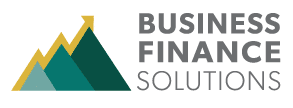Demand for Capital and Access to Capital for Small Businesses 1st Quarter 2017
Access to capital for small businesses remains tight in 2017. Working capital is the primary external financing need for small businesses.
Every quarter since 2012, the Pepperdine University School of Business and Management releases a compiled survey of businesses demonstrating the demand for capital for small and middle-market businesses. Access to capital for small businesses has remained lower than demand in every quarter since 2012.
The most recent survey which covered the first quarter of 2017 shows some troubling trends for small and lower market businesses. The survey shows the struggles with capital of small businesses with revenues of less than $5 million and lower middle-market businesses with revenues of $5 million and $100 million.
The survey also indicates respondents estimates of needing external financing in the six-months after the quarter. It is fair to estimate the trends the study show will continue through 2017.
The most recent Pepperdine survey shows there was a 2.5% different between private capital access (PCA) and private capital demand (PCD). Since its first report was published there have been significant quarterly spikes in the difference between demand for private capital and access to private capital. In all quarters, there has been a significant difference between small business access to capital and lower middle-market capital demand and access. Businesses in the lower middle-market have had much more access to capital than those with annual revenues below $5 million. This could partly be a result of having audited financial statements and strong business processes in place.
The current survey shows lower middle-market businesses have greater access to capital than their demand. It also shows among businesses with less than $5 million in revenues, there is a 5% gap between demand and access.
Demand For Capital By Need
This list for the first quarter of 2017 by the Pepperdine study is ranked by type of capital need reported by both small and lower middle-market businesses:
1. Working capital fluctuations (64.7%)
2. Planned growth, expansion, and acquisitions (not yet realized) (64.2%)
3. Growth due to increased demand (already realized) (58.5)
4. Finance worsening operating conditions (34%)
5. Refinance existing loans or equity (32.7%)
6. Withdraw wealth for owners (22.9%)
In another chart, the Pepperdine study normalizes the data. Working capital and growth capital are at the tops of most business’ demand list.
Difficulty Raising Equity and Debt Financing
Although both small businesses and lower middle-market businesses reported considerable difficulty raising capital, it is clear from looking at the survey results that the resources found in larger businesses made the most difference in their success in raising capital.
How Business Finance Solutions Can Help!
Business Finance Solutions is highly focused on helping small and lower middle-market businesses with debt and equity financing solutions tailored to needs.
Since 1994, our professionals have helped hundreds of companies grow profitably using bank financing, alternative financing, private debt, and private equity. Funds advanced on behalf of our clients have been more than $400 million.
Business Finance Solutions focuses on small businesses and lower middle-market businesses up to about $50 million. Last year we successfully assisted an oil and gas service and construction business with over $100 million in revenues.

Small and lower middle market companies need a team of trusted advisers whether they are in-house or consultants from outside the business.
Our strategy is to get to know your business needs at the deepest possible level so we may match your private debt and equity needs with the least expensive provider. While the cost of capital is critical, we also believe we have a duty to match your company’s personality to any lender or investor we may propose.
Our specialties:
• Working capital needs
• Growth capital
• Capital to acquire a business (M&A) or to expand
• Assisting companies turn-around from being unprofitable to profitable.
• Equipment Finance
• Seasonal and cyclical company financing
• Debtor in possession financing (DIP)
One of our debt and equity experts is standing by to answer any questions you may have. Please feel free to call us at 512.990.8756 or fill out our convenient reply form.


